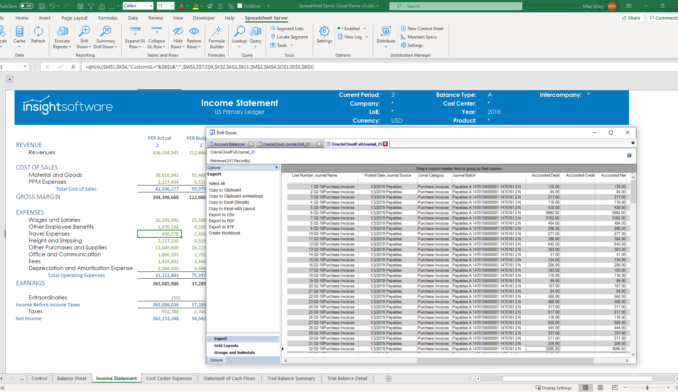What Purchases Should You Approve in a Coronacrisis?

The coronavirus crisis has caused an immediate and dramatic shift in the way we do business. Customer demand has abruptly shifted, and for some businesses, revenue has all but disappeared. Even for so-called essential businesses, the sharp drop in economic activity resulting from the shutdown is sure to have an effect sooner or later.
In virtually every business in every industry, the most immediate concern has been liquidity. Government stimulus loans have provided a lifeline for many small and mid-sized businesses but, for most, the situation calls for keeping a close eye on cash for the foreseeable future.
While revenue and collections are clearly priorities, there is a great deal that businesses can do on the buy-side to contribute to an effective cash preservation strategy. Here are some important things to consider when it comes to purchase decisions this year:
Optimize Your Inventory
Inventory is cash sitting on a shelf in a warehouse. Unlike cash, however, it costs your business money, even when it is doing nothing. Insurance costs, excise taxes, warehouse costs, and inventory shrinkage all affect the bottom line. Even worse, inventory can lose some of its value when newer, more desirable products reach the market or as the demand curve shifts downward. Most importantly, though, inventory is simply less liquid than cash in the bank.
Companies that trim inventory too aggressively may miss out on sales opportunities, however. If you run out of a product, customers may seek it elsewhere. In the process, they may shift more of their purchases to your competition.
For years, tech-savvy companies have understood the value of investing in inventory optimization tools. By carefully balancing expected customer demand with the goal of minimizing inventory, optimization tools can help your company run lean. There are some very sophisticated products on the market that do this but, to achieve the greatest bang for your buck, inventory optimization can be as simple and straightforward as developing a robust set of reports and forecasts built on data from your current inventory management software.
Mind Your Supply Chain
In light of the current crisis, however, the mandate to manage inventory carefully comes with an important footnote: Expect some disruption in the supply chain and plan accordingly. In early 2020, we heard stories about automotive companies scrambling to get spare parts out of China as travel restrictions were beginning to take effect. COVID-19 outbreaks have shut down production facilities in some industries, making it more difficult to procure products and raw materials.
Any upstream disruptions in the supply chain will have a domino effect. If your business depends on goods or raw materials for which there is no substitute, then it may be worthwhile to increase inventories of those critical items while you can.
CapEx and Leases
Most capital expenditures are driven by a need to increase productive output. To the extent that forecasts have changed for most businesses, it makes sense to re-assess planned CapEx investments. CFOs should begin from a baseline assumption that every future capital expenditure needs to be justified, even if it was already approved. Most large corporations have aggressively slashed CapEx outlays in anticipation of lower demand.
Not everyone is cutting back, though. Verizon has seen dramatic increases in traffic on its network, for example, as remote work and distance learning have become the norm for many people. The company recently announced plans to invest $500 million to upgrade its network capacity.
Investments that made sense a few months ago might no longer be justifiable. That does not mean that companies should halt capital expenditures altogether, however. Where there are opportunities to shift to a new business model or to increase efficiencies in the organization, some capital expenditures may be more worthwhile now than ever.
Revisit Your Budget
For most businesses, it makes sense to examine discretionary spending closely, at least until there is greater confidence that the business climate will return to normal. Trimming expenses early in a crisis is a good practice. In a study of business resiliency, McKinsey & Company found that the most resilient companies were the ones that aggressively trimmed their balance sheet and expenses early. These companies were well-positioned to invest in new growth opportunities at the start of the recovery cycle.
CFOs should be revisiting budgets to assess what is truly essential versus what is discretionary. Each line item should be examined with the same question in mind: “In light of our current situation, is this expense essential? Does it still make sense?” In the most obvious cases, that decision will have already been made, but when it comes to the details, a closer review should reveal additional areas to cut.
Review Active Projects
Projects that were previously approved may be reconsidered in light of the coronacrisis. Presumably, each of these was given a green light at some point in the past, based on a sound business case. Does that business case still hold up to scrutiny?
Just as importantly, are there any new projects that should be funded instead? Are there initiatives that could help the company run leaner, better support remote workers, or provide a product or service that can better survive the operational restrictions required as a result of the coronavirus? Technology has been a clear enabler throughout this crisis, for example. Are there specific areas where technology could support the business in its efforts to run lean?
Keep PPP Guidelines in Mind
For US businesses that took Paycheck Protection Program (PPP) loans, there are some important restrictions that could impact loan forgiveness. PPP loans will be forgiven if all of a company’s employees are kept on the payroll for eight weeks, and the money is used for payroll, rent, mortgage interest, or utilities.
Similar provisions may apply to government assistance programs through other US government entities, state programs, or stimulus programs outside of the United States. In any case, be sure that you understand the detailed requirements and follow them to the letter.
Above all, CFOs should avoid a one-size-fits-all approach to running lean. For most businesses, it will indeed make sense to cut back purchases in some areas. In many cases, it will make just as much sense for those same businesses to increase outlays that can bolster their resiliency and increase their capacity to weather this storm . . . and the next one that comes along.
Plan your COVID-19 response with resources from our Resource Center.








